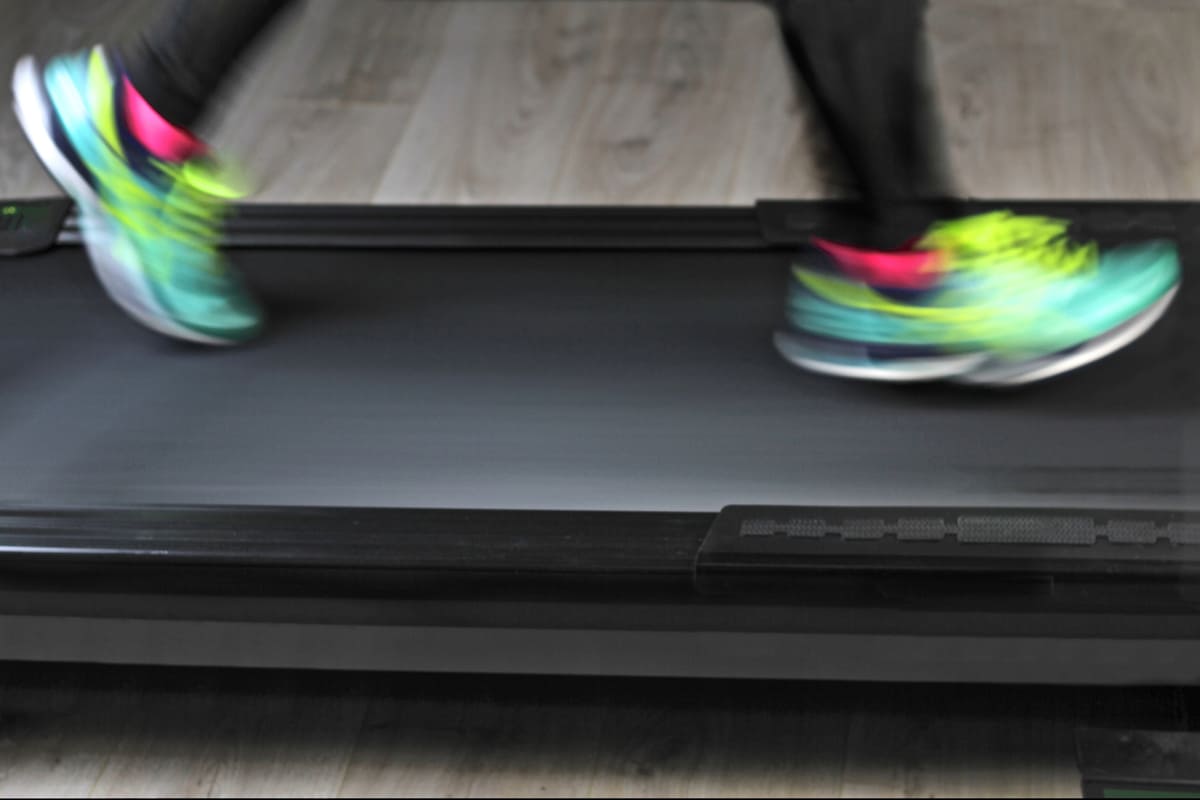HIIT workouts have been a big hit on the fitness scene for several years now, and for a good reason: they work! An acronym for High-Intensity Interval Training, HIIT consists of adding short bursts (think 30-60 seconds) of speed or intensity to your workout. These short intervals, followed by intervals of active recovery, have proven to be highly effective when it comes to improving your cardiovascular health, strength, and overall fitness.
They work because they keep the body guessing, forcing it to learn to adapt quickly to change, which in turn speeds up your rate of progression. Plus, thanks to an “afterburn” effect, intervals turn your body into a calorie and fat-burning machine that keeps working long after you stop exercising.
While you may think of intense intervals as something reserved for elite athletes, the fact is that anyone can do them, and they can be incorporated into almost any form of exercise, from walking to swimming, cycling, and strength training. Runners especially can benefit from HIIT as a way to increase both speed and stamina, whether you’re a competitive marathoner or just looking for a way to get the most bang for your running buck. As a bonus, high-intensity intervals are great boredom busters and can help you break through fitness plateaus.
HIIT It Hard
The key to HIIT training in any activity is understanding what it means. Randomly speeding up during a run is not necessarily interval training. You need to be pushing your maximum effort or anaerobic threshold. How do you know when you’ve found it? If you know your heart rate zones, your fitness tracker can give you a reasonably close (if not always precisely accurate) approximation. Click here for some of our favorite heart rate monitoring watches.
If you are not monitoring your heart rate, you can still get a general idea by gauging your body’s physiological response or your perceived exertion level. Your HIIT pace should be difficult to sustain for more than the designated interval, leaving you breathless and with your muscles close to fatigue. In other words, if you can hold a conversation with your running buddy, you are not there yet. Check-in with yourself and be honest about your effort; you might be overestimating how hard you are working. There is a difference between simply being “uncomfortable” versus being at your max capacity.
HIITing Your Stride

When it comes to HIITing your stride, there are essentially two ways to do it during a run: speed and incline. Depending on your goals, you may choose to focus on one or alternate between them. Speed drills involve a series of sprints and are the preferred method for athletes who want to improve race time or for those individuals who want a quicker, more efficient workout and a faster way to lose weight. A longer run at a steady pace may keep you in the fat-burning zone longer, but one study found that two minutes of sprint intervals performed three times per week for six weeks produced the same fat-burning effect as 30 minutes of continuous endurance exercise. Same results, less time? Yes, please!
Adding an incline into the mix offers the same opportunity to increase speedwork and get those fat-burning results, but it brings some additional benefits in the form of sheer muscle power. Running uphill builds up your leg strength, which will also strengthen your performance on flat roads. Plus, hills reduce your risk of injury due to the lower impact and limited range of motion required to power up. Hill running intervals may improve your overall run form because the act of running on an incline forces you into a good running posture with a shorter stride and a strong knee drive.
How to HIIT It
The beauty of a HIIT running workout is that all you need is a good pair of shoes and an open road. The following two 20-minute workouts can help you get started. Remember that for HIIT to be effective, you must push your max limits for the intervals and drop to about 40-50% of your max during the recovery periods. As always, hit up your doctor before starting this or any other exercise program.
20-Minute HIIT Running Workout: Sprint

- Warm up at an easy pace for 5 minutes.
- Sprint for 30 seconds at 85-95% intensity.
- Recover for one minute.
- Repeat for seven intervals.
- Walk or slow jog for the remaining 4.5 minutes to cool down.
20-Minute HIIT Hill Run Workout

- Warm up on a flat road at an easy pace for five minutes.
- Run uphill at your max pace for 30 seconds.
- Jog back down.
- Repeat for 10 minutes.
- Walk or slow jog on a flat surface to cool down.
If you prefer the treadmill, check out these workouts for ideas for using incline and speed to create your own indoor HIIT challenge.
Whether you choose to run outside or in the gym, adding these intervals to your routine will provide you with an effective and efficient way to HIIT all your fitness goals.
Read Next:
Runner Safety: Learn How to Protect Yourself







